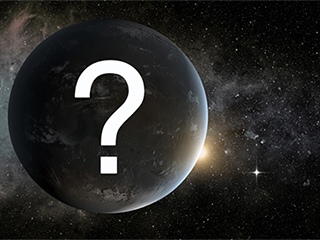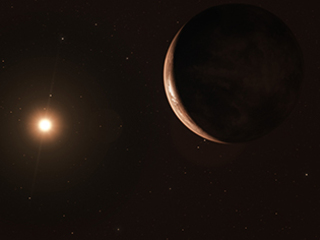News | April 28, 2020
Discovery Alert: The Rhythmic Dance of a 5-planet System

Artist's rendering of six planets orbiting a Sun-like star, Kepler-11. A newly discovered system, also likely with six planets, includes a "super-Earth" and four "mini-Neptunes." Image credit: NASA/Tim Pyle.
The planets: HD 158259 b, c, d, e, f, and (maybe) g
The discovery: A “super-Earth” and at least four “mini-Neptunes” orbit a Sun-like star 88 light-years away. A sixth, outermost planet also is likely, though its presence could not be fully confirmed. Perhaps this system’s most haunting quality: All the planets are locked in rhythmic harmony, like a waltz in a cosmic ballroom.
Key facts: Each planet in this system makes three orbits for every two orbits of the next planet out. While such “orbital resonance” has been seen in other systems of planets beyond our own — that is, systems of exoplanets — this offers one of the most striking examples. The planets very closely match this “3:2” resonance, though not quite perfectly.
Details: In our own solar system, orbital resonance is found mainly among the moons of Jupiter and Saturn, as well as between Pluto and Neptune. The gravitational influence of one body on the next creates this rhythmic dance, but their orbits must be in close proximity. And this new planetary system fits the bill. The innermost planet, HD 158259 b, hugs its star so tightly that a year — once around the star — takes only 2 days. Planet c takes 3.4 days, planet d, 5, planet e about 8 and planet f, 12. The likely outermost planet, g, appears to have about a 17-day orbit.
Fun facts: The other systems known to be in orbital resonance include the famous TRAPPIST-1 family of seven planets, all roughly the size of Earth, about 40 light-years away. They, too, are packed tightly around their star, in this case a small red dwarf. Several of these worlds fall within their star’s habitable zone, where temperatures could be mild enough to allow liquid water on the surface. In some ways, the innermost planet in the new system, HD 158259 b, is also comparable to Earth: a bit bigger around, but likely to be terrestrial — rocky — just like our planet. This planet also orbits a star very much like our Sun. But the planet and its siblings orbit their star so closely they’re almost certainly extremely hot — for planet b, far too hot to be habitable.
The discoverers: An international team led by researcher Nathan C. Hara, of the University of Geneva, relied on observations of the star HD 158259 that were made over a seven-year period. The data came from the SOPHIE spectrograph, an instrument installed on a telescope at the Haute-Provence Observatory, in the South of France. SOPHIE measures the wobbling motions — “radial velocities” — of stars, caused by gravitational tugs from orbiting planets, which reveal the planets' "heft," or mass. The research team also used data from a NASA space telescope, TESS (the Transiting Exoplanet Survey Satellite), to detect the innermost planet, though by a different method. TESS watches for tiny dips in starlight as a planet crosses the face of its star. That reveals the planet's size and how long it takes to make an orbit. Data from SOPHIE helped confirm the finding by TESS. And by combining findings from both, the science team determined that HD 158259 b is about 1.2 times as big around as Earth and more than twice its mass.











